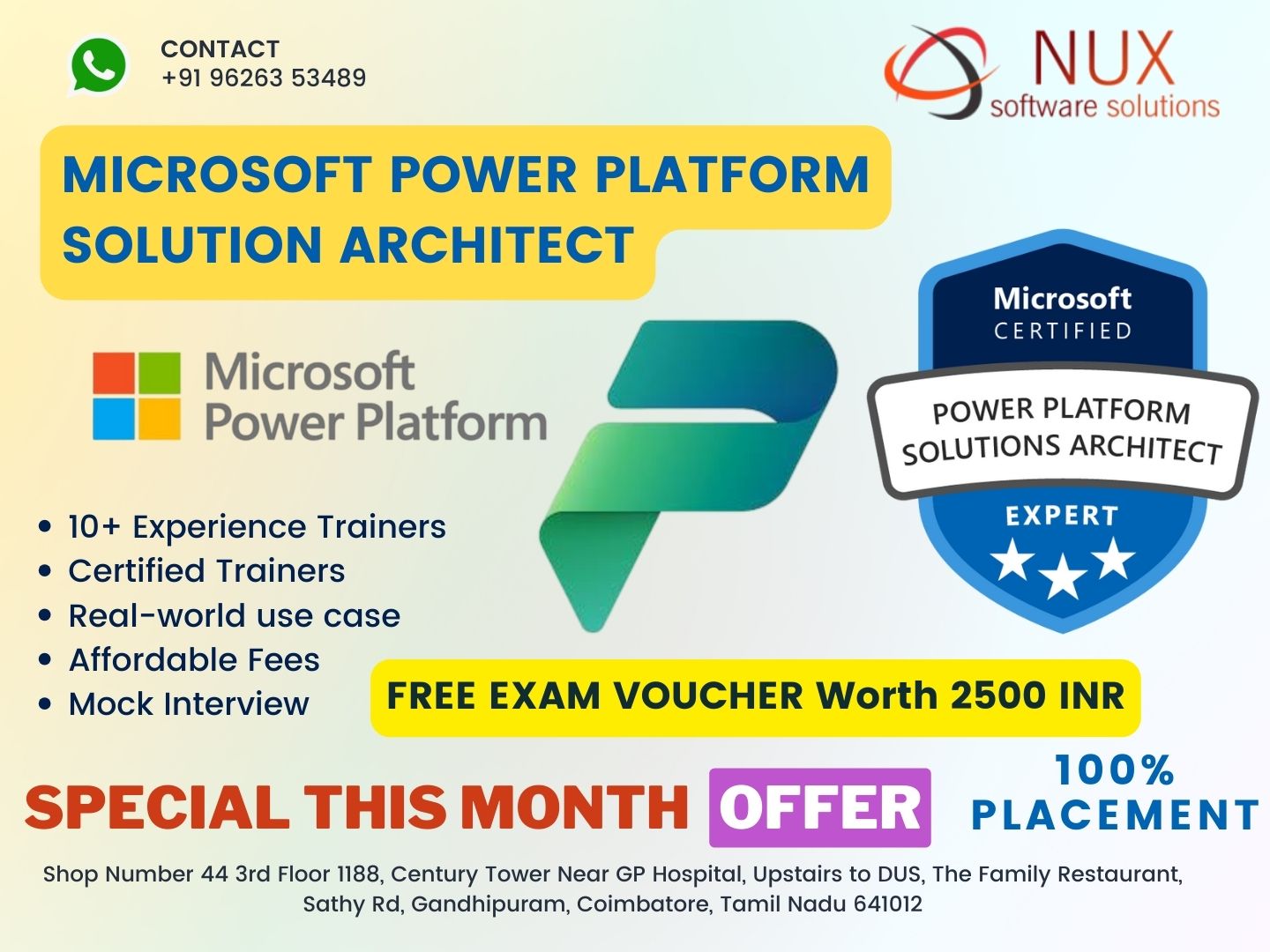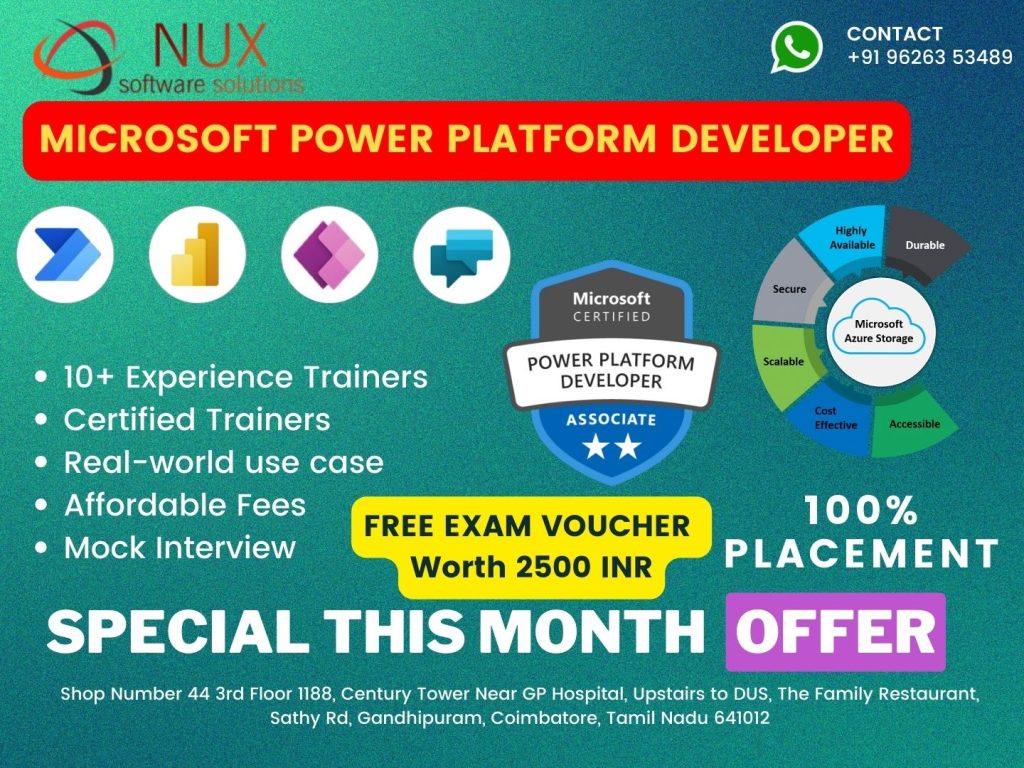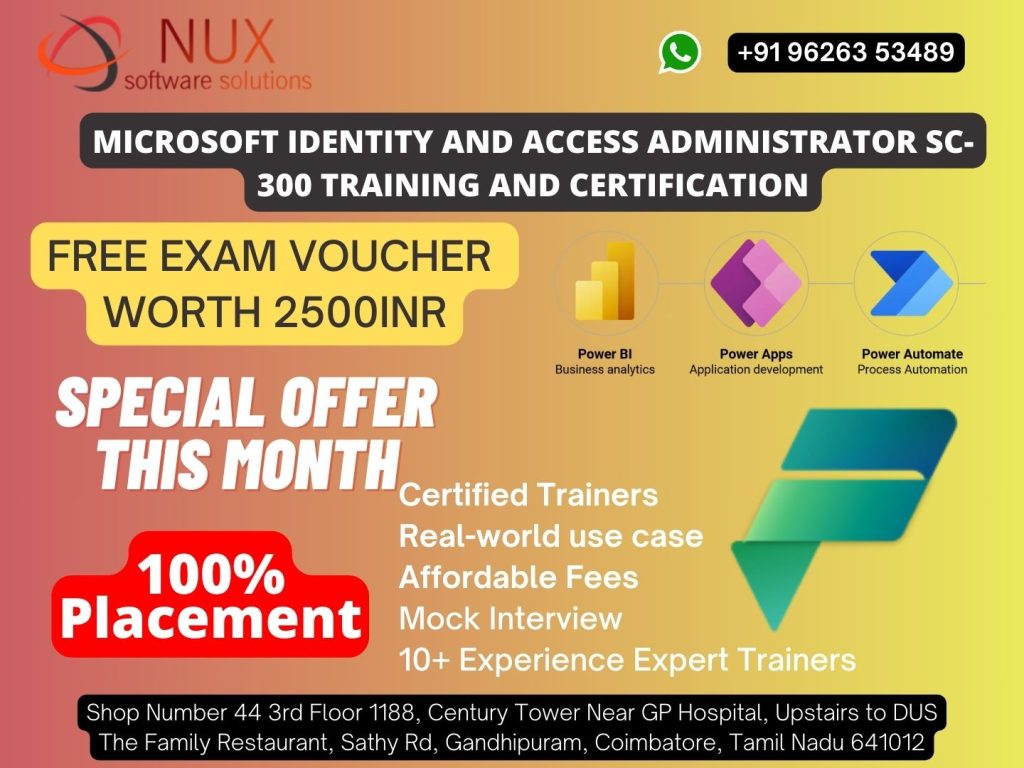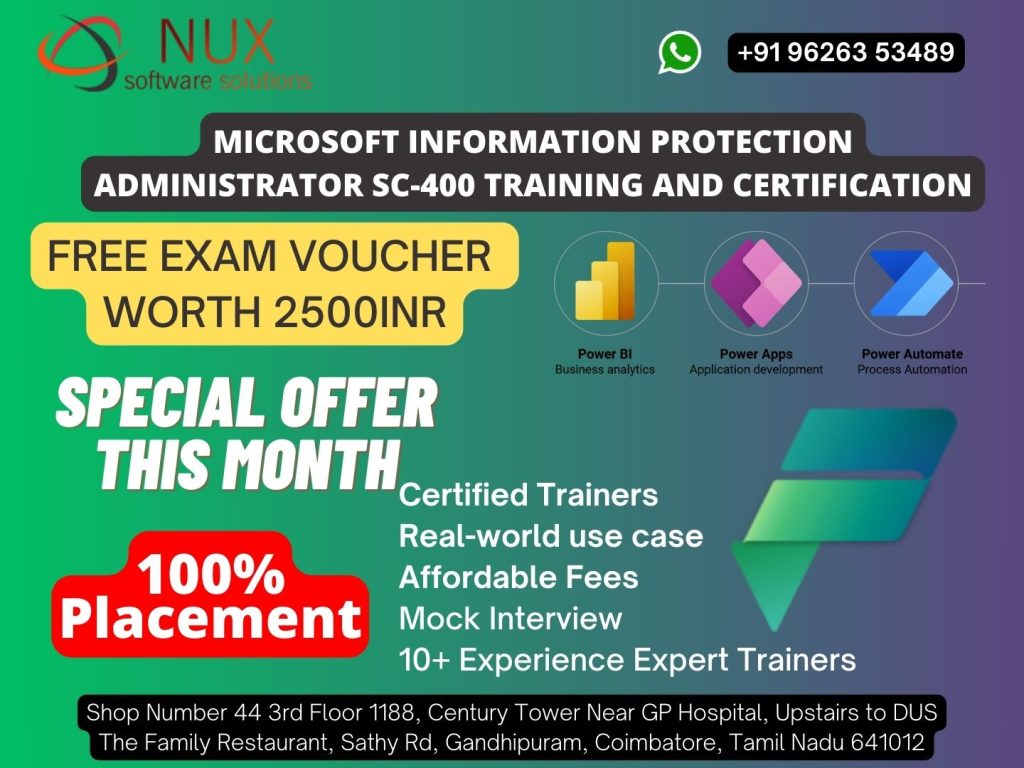Microsoft Power Platform Solution Architect PL-600

Microsoft Power Platform Solution Architect (PL-600) Training and Certification in Coimbatore
Step into a high-level career role with our Microsoft Power Platform Solution Architect (PL-600) Training in Coimbatore. This advanced course is designed for professionals who lead successful Power Platform projects by aligning business needs with robust solutions using Power Apps, Power Automate, Power BI, and Microsoft Dataverse.
The PL-600 certification is an essential credential for solution architects and senior consultants who design end-to-end business solutions using Microsoft’s Power Platform ecosystem. This course provides hands-on, real-world knowledge to manage enterprise-level implementations, integrate Microsoft 365 services, and ensure security and governance.
Why Take This Course?
-
Expert-Led Training aligned with Microsoft’s PL-600 certification exam
-
Focus on Architecture – From vision to delivery, planning to execution
-
Real-Time Project Scenarios with guided hands-on labs
-
Build Role-Based Expertise for designing scalable, secure Power Platform solutions
-
Preparation for Microsoft Certified: Power Platform Solution Architect Expert
What You Will Learn
-
Designing a solution architecture based on business requirements
-
Leading solution design sessions with stakeholders and development teams
-
Implementing security, data models, and governance across environments
-
Integrating Power Platform with Microsoft 365, Azure, Dynamics 365, and third-party systems
-
Defining and validating application lifecycle management (ALM) strategies
-
Optimizing performance, scalability, and usability of Power Platform solutions
-
Managing change, deployment, and adoption
Who Should Enroll?
-
Power Platform consultants and senior developers
-
IT professionals with experience in Power Apps, Power Automate, and Dynamics 365
-
Solution architects designing end-to-end business applications
-
Professionals aiming for the PL-600 certification
-
Anyone transitioning into leadership roles in Power Platform implementations
Course Features
-
Instructor-led sessions with certified Microsoft solution architects
-
Access to sandbox environments for real-world practice
-
PL-600 mock exams and exam preparation support
-
Completion certification and career mentoring
-
Post-training guidance for interviews and project roles
Advance your Microsoft Power Platform career with strategic design and leadership skills. Enroll in the PL-600 Training in Coimbatore and become a certified Power Platform Solution Architect who can guide digital transformation in any enterprise.
PL-600 Course Syllabus
Modules
Perform solution envisioning and requirement analysis (35-40%)
Initiate solution planning
– Evaluate business requirements
– Identify Microsoft Power Platform solution components
– Identify other components including existing apps, Microsoft Dynamics 365 apps, AppSource apps, third-party components, and components from independent software vendors (ISVs)
– Identify and estimate migration and integration efforts
Identify organization information and metrics
– Identify desired high-level organizational business processes
– Identify business process improvement opportunities
– Assess an organization’s risk factors
– Review key success criteria
Identify existing solutions and systems
– Evaluate an organization’s enterprise architecture
– Identify data sources needed for a solution
– Define use cases and quality standards for existing data
– Identify and document an organization’s existing business processes
Capture requirements
– Refine high-level requirements
– Identify functional requirements
– Identify non-functional requirements
– Confirm that requirements meet an organization’s goals
– Identify and document an organization’s desired business processes
Perform fit/gap analyses
– Determine the feasibility of meeting specific requirements
– Evaluate Dynamics 365 apps and AppSource options to solve requirements
– Address functional gaps through alternate solutions
– Determine the scope for a solution
Architect a solution (40-45%)
Lead the design process
– Design the solution topology
– Design customizations for existing apps
– Design and validate user experience prototypes
– Identify opportunities for component reuse
– Communicate system design visually
– Design application lifecycle management (ALM) processes
– Design a data migration strategy
– Design apps by grouping required features based on role or task
– Design a data visualization strategy
– Design an automation strategy that uses Power Automate
– Design environment strategy
Design the data model
– Design tables and columns
– Design reference and configuration data
– Design relationships and relationship behaviors
– Determine when to connect to external data versus import data
– Design data models to address complex sets of requirements
Design integrations
– Design collaboration integrations
– Design integrations between Microsoft Power Platform solutions and Dynamics 365 apps
– Design integrations with an organization’s existing systems
– Design third-party integrations
– Design an authentication strategy
– Design a business continuity strategy
– Identify opportunities to integrate and extend Microsoft Power Platform solutions by using Microsoft Azure
– Design Robotic Process Automation (RPA)
– Design networking
Design the security model
– Design the business unit and team structure
– Design security roles
– Design column and row level security
– Design security models to address complex sets of requirements
– Determine security model management policies and processes
– Identify Microsoft Entra groups and app registrations required to support a solution
– Identify data loss prevention (DLP) policies for a solution
– Determine how external users will access a solution
Implement the solution (15-20%)
Validate the solution design
– Evaluate detail designs and implementation
– Validate security
– Ensure that the solution conforms to API limits
– Assess the solution performance and impact on resources
– Resolve automation conflicts
– Resolve integration conflicts
Support go-live
– Identify and resolve potential and actual performance issues
– Troubleshoot data migration
– Resolve any identified issues with deployment plans
– Identify factors that impact go-live readiness and remediate issues



